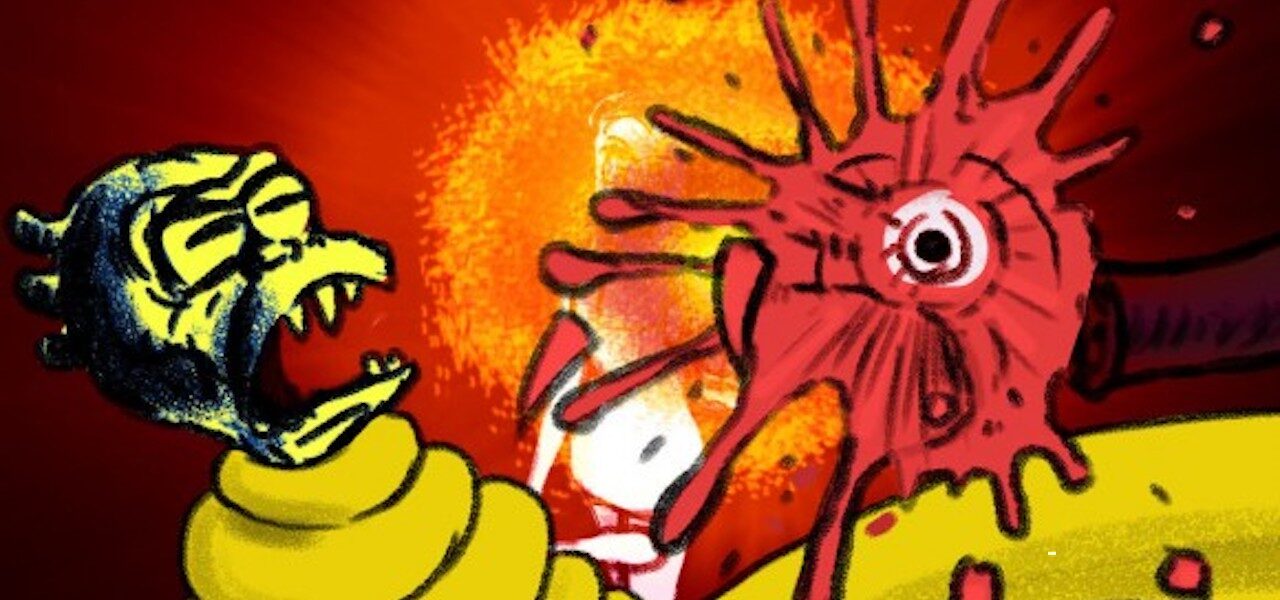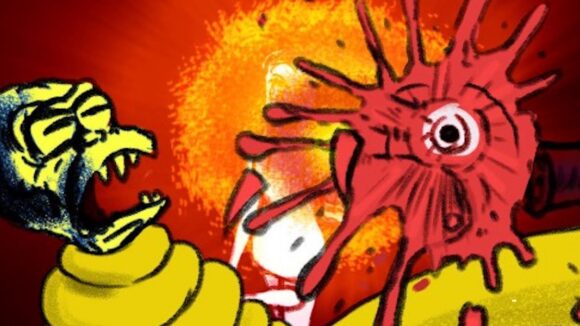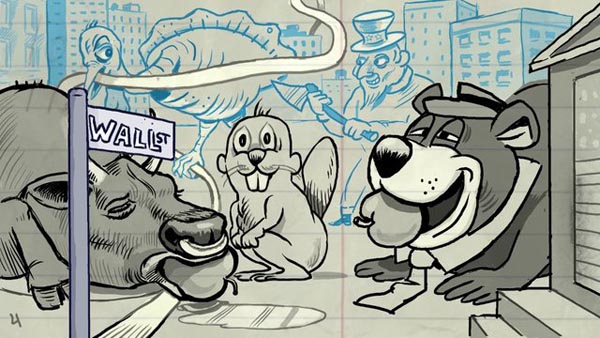

RIP Gary Leib, New York Filmmaker, Animator, And Cartoonist, 65
Cartoonist, filmmaker, and animator Gary Leib died aged 65 on March 19. The cause was a heart attack.

Multi-talented and creatively restless, Leib made waves in the music, comic, and animation worlds, often combining disciplines within one project. But whether he was creating artwork for the live-action feature American Ultra (2015) or animating a music video for his ambient-country band Suss, his humorous, generous, often absurdist worldview always shone through.
Gary David Leib was born in Chicago on October 29, 1955 — two days before Halloween, a celebration with which he would develop a close affinity. He grew up in Lincolnwood, Illinois, then attended Rhode Island School of Design, graduating in 1977 with a BFA in printmaking. At the school he met his future wife, the painter Judy Glantzman, as well as Doug Allen, who would become a key creative partner.
Leib and Allen first made a name for themselves as musicians, co-founding the country-flecked new wave band Rubber Rodeo. Leib played keyboard; the band recorded two albums for Mercury Records and earned a Grammy nomination. Some of its members later regrouped to form Suss.

While touring in the 1980s, Leib and Allen passed time between gigs by sketching together. The seed was planted for a new kind of collaboration: by 1993, the pair had co-created Idiotland, a comic series that picked up a cult following and a nomination for a Harvey Award. It set the tone for the playful, surreal style Leib adopted in later comics and, increasingly, his animation projects.
Moving to New York, Leib founded the animation studio Twinkle in 1993. He created shorts and commercials for a wide range of clients, including an Altoids ad, a music video for They Might Be Giants, and a 2008 series for The New York Times named Concrete Jumble, which retold the histories of the city’s iconic districts. MTV commissioned a network ID from Leib, and he also contributed an episode to the network’s Cartoon Sushi anthology series.
As well as creating the artwork used for fictional artists in films, Leib also contributed animated segments for a number of features. He produced visual effects for the low-budget horror film Love God (1997) and animated sequences in the film adaptation of Harvey Pekar’s American Splendor (2003), which won the grand jury prize at the 2003 Sundance Film Festival.

Leib reunited with Love God producer Anthony Bregman for American Ultra, a feature starring Jesse Eisenberg as a cartoonist and CIA sleeper agent who has created his own comic character called Apollo Ape. Leib created a sketchbook prop for Eisenberg’s character and singlehandedly produced the film’s acclaimed animated finale. In an interview with Cartoon Brew at the time, he said:
I am primarily influenced by comic books from the ’50s through the ’80s (EC Comics, Mad, Zap Comix, Raw). Trying to draw like these geniuses keeps me inspired every day. The best work from that era transcended expectations of what a comic book could be: extreme violence, subversive humor, and brutal horror was presented with beautiful, seductive artwork. American Ultra was a perfect opportunity for me to combine my love of those comics with animation, making every new situation Apollo Ape encounters surprising.
Leib was also an educator, teaching animation at the School of Visual Arts (SVA), Parsons School of Design, and Montclair State University. In 2011, he was the artist-in-residence at Fairmont State University. Commenting on Leib’s exhibition of videos, drawings, and ceramics at the university’s Brooks Gallery, curator Marian Hollinger said:
Most children want to be one major “thing” when they are growing up: an artist, a cartoonist, a musician, a filmmaker. Gary Leib is fortunate enough to have done all of those things … He is most definitely NOT an artist who waits for inspiration to hit before he takes up his pencil. He creates his own inspiration during the process of working.
Animator and comics writer John Kuramoto, a former colleague of Leib’s at Twinkle, spoke to Cartoon Brew about their time spent working together:
Gary was really great at convincing people that they could do things they weren’t sure they were capable of. I’m fairly certain his students at SVA and Parsons would agree. Even before I’d met him, the idea of working with him convinced me to move to New York.
As the sole employee at his company Twinkle, he convinced me to learn Flash, although I’d never done any animation before. He convinced me and Doug Allen that the three of us could make actual cartoons in Flash, which, in 1999, was a novel idea unfortunately hampered by dial-up modems and a lack of ways to tell people about them. He convinced me to write a book about making those cartoons, which I felt like a fraud for doing, but he got me to do it anyway. And when he decided he wanted to focus on his art, he convinced me that I could make it on my own.
Gary used to say that if we were going to fail, we had to fail big, because people who failed big always got second chances. I’m not sure that we ever really tested that theory, but he certainly wasn’t afraid to fail. And if a second chance is reinventing yourself, then he had seemingly endless second chances.
Leib is survived by his wife Judy Glantzman-Leib, his daughter Lila Glantzman-Leib, sister Beth Leib, and brothers Alan and Joel Leib.
Leib posted artwork, including photos of his annual window display at Brooklyn’s Desert Island Comics, on his blog. Below is a sampling of his animated films.
“Bowery” from “Concrete Jumble”:
“101 Quick and Simple Dishes for Fall” from “Concrete Jumble”:
Music video for Suss:
Image at top: “American Ultra”

.png)

